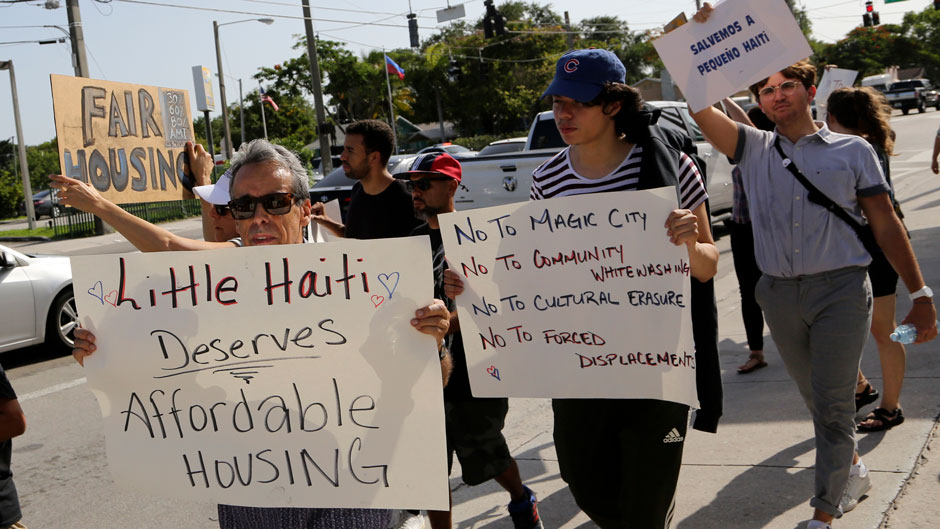In a recent interview, journalist Pete Hamill was talking about his beloved New York City.
“Once there was another city here; now it is gone,” he said.
Indeed, Manhattan has been transformed by a wave of gentrification that has drastically changed entire neighborhoods.
Many in Miami feel that it could happen to their city as well.
Areas like Wynwood, Edgewater, and increasingly Little Haiti and Little Havana are losing their distinct neighborhood character and are now home to high-end stores, restaurants, and art galleries catering to both national and international affluent residents.
“The issue with gentrification is that poorer neighborhoods always want to see economic investment and improvements of quality of life and aesthetics of their neighborhood, but not at the expense of being priced out,” said Robin Bachin, associate professor of history and assistant provost for Civic and Community Engagement at the University of Miami.
On Tuesday, Nov. 12, the Office of Civic and Community Engagement will present a free screening of the movie “The Last Black Man in San Francisco” at the Bill Cosford Cinema, followed by a panel discussion on the topic of gentrification and the impact on communities.
While many may see gentrification as an improvement—updated housing, higher-end businesses, and lower crime—to many others displacement means the destruction of a way of life that further highlights economic and societal inequities.
Germane Barnes, assistant professor at the School of Architecture, has been in Miami for six years and has noticed the changes all over the county, including in his neighborhood of Edgewater.
“Gentrification in Miami is no different than in any other city in that developers go into black and brown communities that are disinvested and low income, where the property value is really low, and they buy properties without giving residents any say on future speculation,” he said.
“They raise the rent and the people who did not sell their properties have to move out because they cannot afford property taxes,” he added.
This type of displacement forces low-income residents, many of them minorities, to move farther away from the city center, Barnes said. With that exodus, mom-and-pop stores are lost, small corner neighborhood restaurants close, and the fabric of the neighborhood is forever changed, he said. Lifelong neighbors also move away, changing the social network of many.
“There are many factors that go into making a community,” said Bachin. “Having interpersonal relationships and having that network and coalition of people that you know you can turn to is part of that. So, what happens when that sense of safety and cohesion gets broken apart?”
Bachin said that it is worrisome to see how properties are being acquired by Limited Liability Corporations (LLCs). These corporations are buying in areas like Allapattah and Little Haiti, which are traditionally low-income, and will sit and wait until the time is ripe to rebuild. This type of “speculative buying” drives the cost of real estate up, making it more difficult for first time homebuyers and for renters to access housing, she said.
But gentrification can also alter the physical space of the neighborhoods in drastic ways.
Taller buildings with larger number of units increase the density of the population and wreak havoc with traffic. The only way to control this is through community benefit agreements where the neighborhood residents have a say and local governments set community benefit agreements to limit the scope of a development, said Bachin.
If done with input from the community, gentrification can be positive, said Andrea Heuson, professor of finance at the Miami Herbert Business School.
“Sometimes with gentrification, what is replacing the old structures makes the place better,” she said. She cited a Coconut Grove project where the developer did not increase the density and offered incentives for the tenants to stay in the refurbished units.
But involving neighborhood participation tends to be the exception. Barnes believes that in an ideal world gentrification could be a good thing, though he has seen that the economics of the project tends to drive the process.
“In an ideal world gentrification can be good because it allows people to decide if they want to stay in their place as new resources come in,” Barnes said. “But unless the living wage changes and we remove dozens of policies that restrict black and brown people, I don’t see a benefit in it.”

